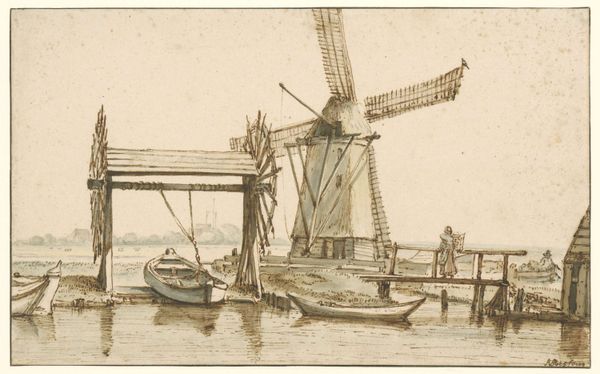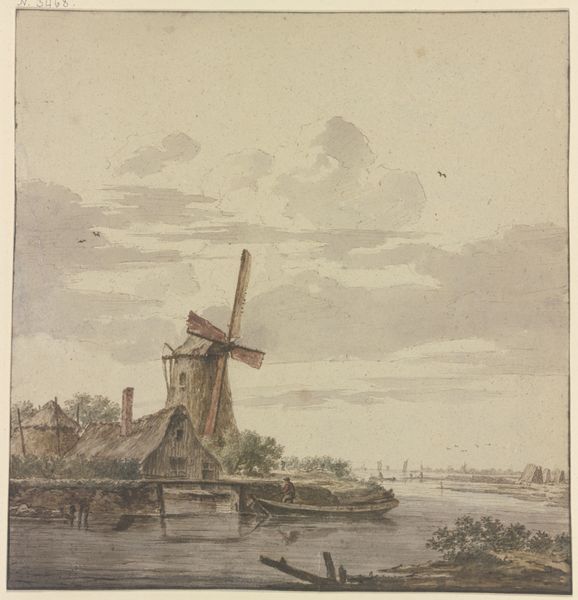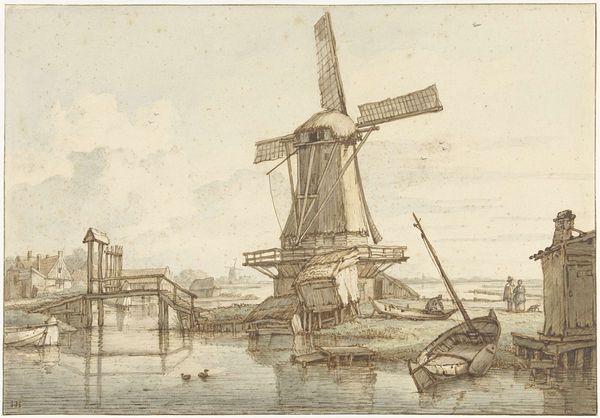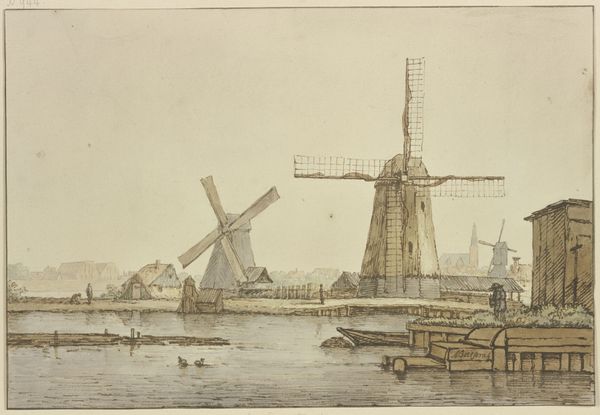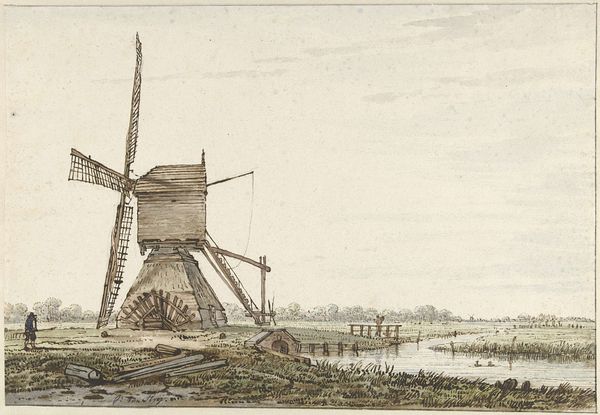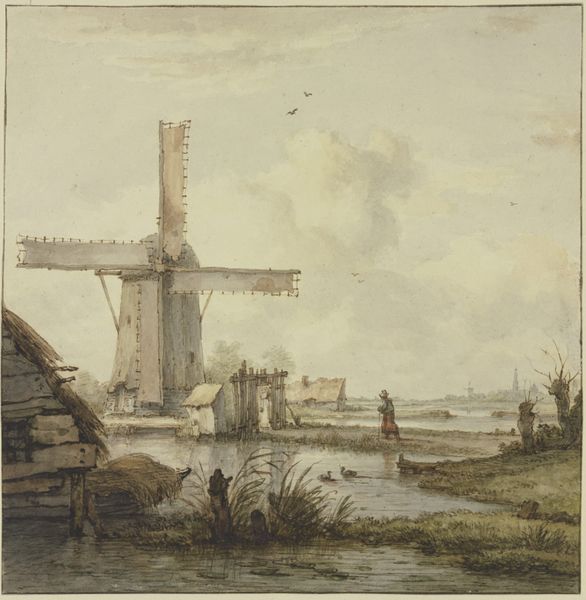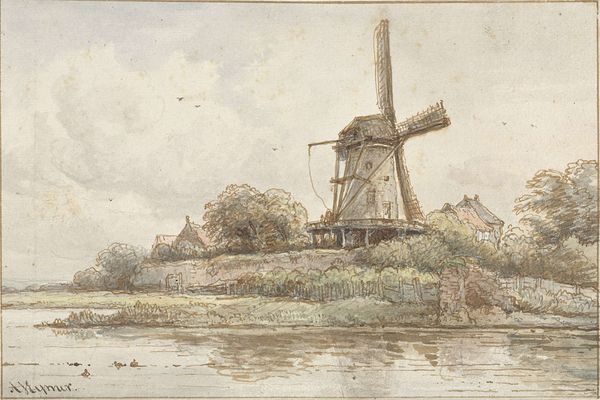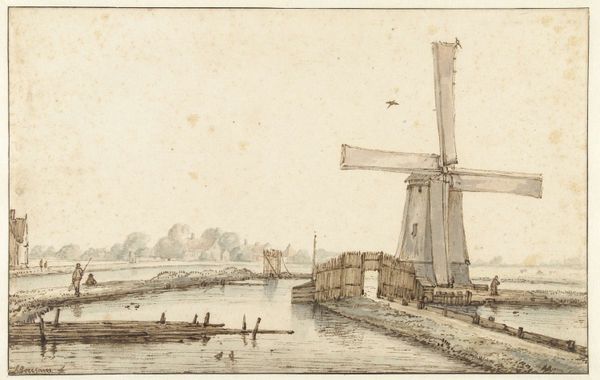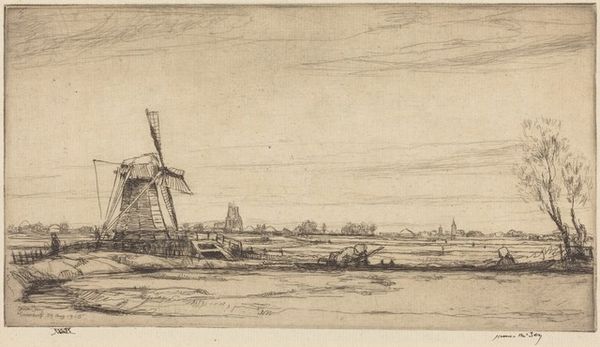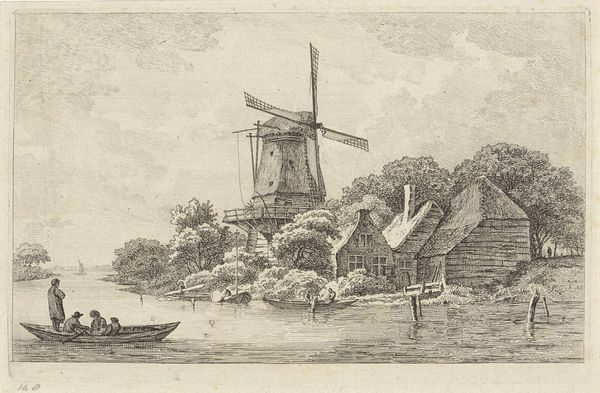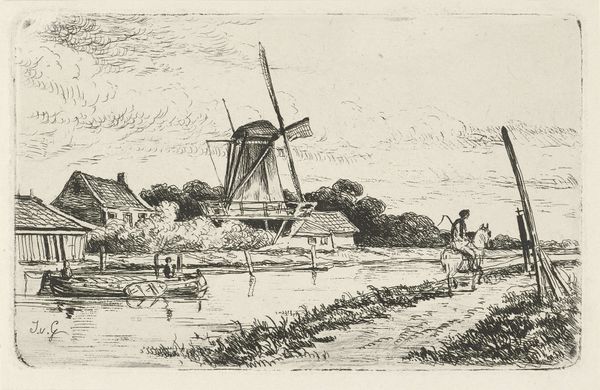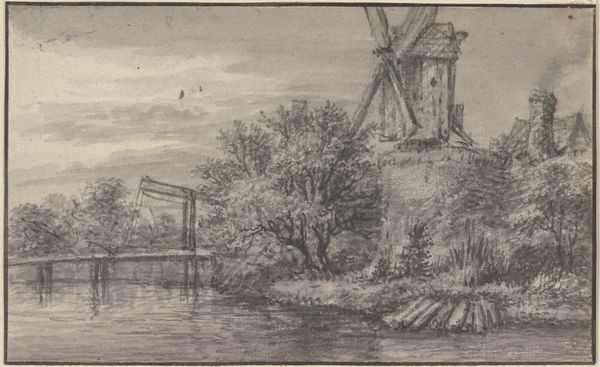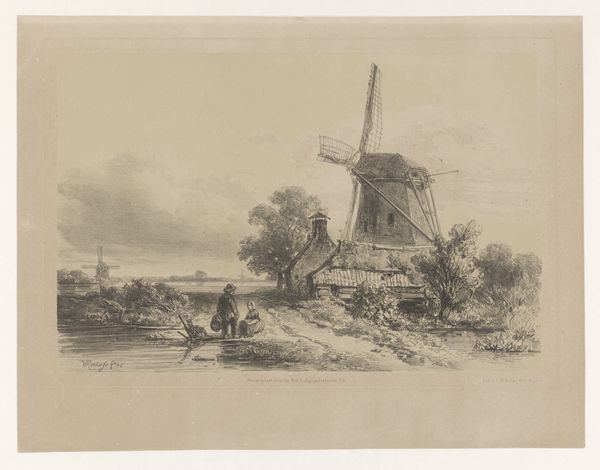
drawing, ink, chalk, graphite
#
drawing
#
baroque
#
landscape
#
ink
#
chalk
#
graphite
Copyright: Public Domain
Curator: I’m drawn in by the calm and contemplative atmosphere. The muted palette creates a sense of distance, a look into another era. Editor: Indeed. Let's delve into this intriguing drawing entitled "Landschaft mit Schiffshebewerk und Mühle"—Landscape with a Boat Lift and Mill. While undated, it's attributed to Anthonie van Borssom and held at the Städel Museum. Borssom, working within the Dutch Baroque tradition, captured the nuances of his surroundings. Curator: I find the juxtaposition of the mechanical—the boat lift—with the organic, represented by the windmill, particularly compelling. The lift feels almost precarious. I'm left wondering, what kind of labor relationships supported such machinery? Were these systems designed for individual gain or broader communal benefit? Editor: The windmill as a symbol in Dutch art is incredibly layered. On one hand, it signified technological progress and dominion over the landscape. But, on the other, it was deeply interwoven with ideas of national identity and industriousness. Windmills provided power and were fundamental to the country's water management. This cultural resonance is probably what makes these mills the quintessence of landscape art from the Low Countries. Curator: Yes, I see those associations in the details! But I also wonder about the person walking on the bridge: are they allowed leisure time because of the labor saving device? I find myself looking beyond the surface beauty and questioning what kind of sociopolitical relations such scenes masked. Editor: A potent point, highlighting the inherent class dynamics present. Yet, on a symbolic level, I can't help but see that figure as connected to all the other symbols in this image; to the land, the village and to the ever-turning cycles of labor that sustain it. Curator: I find the fact that so much is missing in the description – we are never given the date it was created – to have an influence. Are we to apply a 21st century outlook on life in a much earlier era? Editor: You're making me re-evaluate. Looking at this from the viewpoint of labor, race, and the distribution of resources forces a critical engagement with Dutch history and its global legacy.
Comments
No comments
Be the first to comment and join the conversation on the ultimate creative platform.
